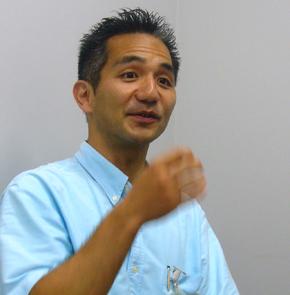The Osaka Stock Exchange boasts a "world -class response speed" realized in HiRDB: DBMS introduction case: HiRDB
Speaking of the stock exchange, it is new to remember that from 2005 to 2006, the system fell into a state of suspension of transactions without enduring the rapid increase in transactions, resulting in a major social problem.The stock exchange system was only important social infrastructure, but criticism of the stock exchanges at the time was severe.
In February 2006, when such headwinds blew, the Osaka Stock Exchange (hereafter, the Ocean) began to operate a trading system built on the first open system on a domestic stock exchange.Although it was a project that has been carefully cared for four years, it is not hard to imagine that the first attempt in Japan was a considerable pressure for those involved.However, it was fortunate to be uneasy.The new system has achieved significant performance improvement and stable operation, and has reached today.
Needless to say, the Odora is a company that operates the second largest stock exchange in Japan (the company himself is also open to the company).In addition to the first part of the market and the second part of the market, the company offers the operation of Hercules, a market for emerging companies, and the Nikkei 225 Futures Transaction, a representative derivative product in Japan.

The Opai was considering fully renewing the old trading system that had been built and operated with Fujitsu's main frame from 2002 to 2003.Kazuyori Yamamori, a senior researcher, says:"The old system built 16 years ago in 1991 was continuing to expand by succession, so it was reaching the ability limit. But I don't know how much transactions will increase in the future.In order to improve high performance and expandability, we decided to renew it to a new open system. At that time, the transition to an open system was progressing overseas, and securities trading that provided derivative products to sell high -speed response.A place appeared. We needed to respond to such a global flow, even if we were at risk. "
株式会社大阪証券取引所 システム本部 上席調査役 山森 一頼氏The Oda has decided to take another risk.It is a vendor change from Fujitsu to Hitachi (Hitachi).The business of the stock exchange is highly specific, and the system development is oligopolized by the two companies, but the OSE chose Hitachi, which was proposed in the UNIX environment this time (Fujitsu is in charge of renewing the settlement system at the same time).。Providing hardware / software products, application development and almost "All Hitachi".Mr. Kazuhiro Asano, a researcher of the System Headquarters, said, "Considering the response to disability, a single vendor (can grasp the entire system with one company). If you are Hitachi, you have a vertical integration from hardware to middleware.I was able to expect power. "
株式会社大阪証券取引所 システム本部 調査役 浅野 和弘氏The outline of the new system solidified with Hitachi products is as shown in the figure below.Each server uses a UNIX server midrange machine "EP8000/570" (IBM OEM product, OS is "AIX 5L").For storage, place the "SANRISE" series high -end machine "Universal Storage Platform".The DBMS (database management system), which holds the key to the new system, is equipped with "HiRDB" and also equipped with middleware such as the transaction monitor "OpenTP1" (only operation management server that operates the system operation management software "JP1".Combination of PC server "HA8000" and "Windows Server 2003").
大阪証券取引所の新売買システムの概略図 《クリックで拡大》Let's take a look at how high -level "performance," "availability," and "expandability" required for the trading system of the stock exchange are realized.
First, in terms of performance, there was a dramatic improvement than the old system.The processing speed, which was 60 / second in the old system, is currently reached to 550 / second, about 9 times, and the processing capacity is 1.7 million, 8 million, day, and 1.2 million in the contracted number of orders.It has been significantly increased from a day to 3.3 million / day.Prior to the operation of the new system, the OSE has a transaction that completely exceeds the ability of the old system.Hercules had to be temporarily frozen, and the distribution of stock price information was also delayed frequently, but the new system saved the plight.Since the switching, the number of transactions has been increasing, including the launch of the Nikkei 225 futures mini for individual investors, but the new system is processing with plenty of time.